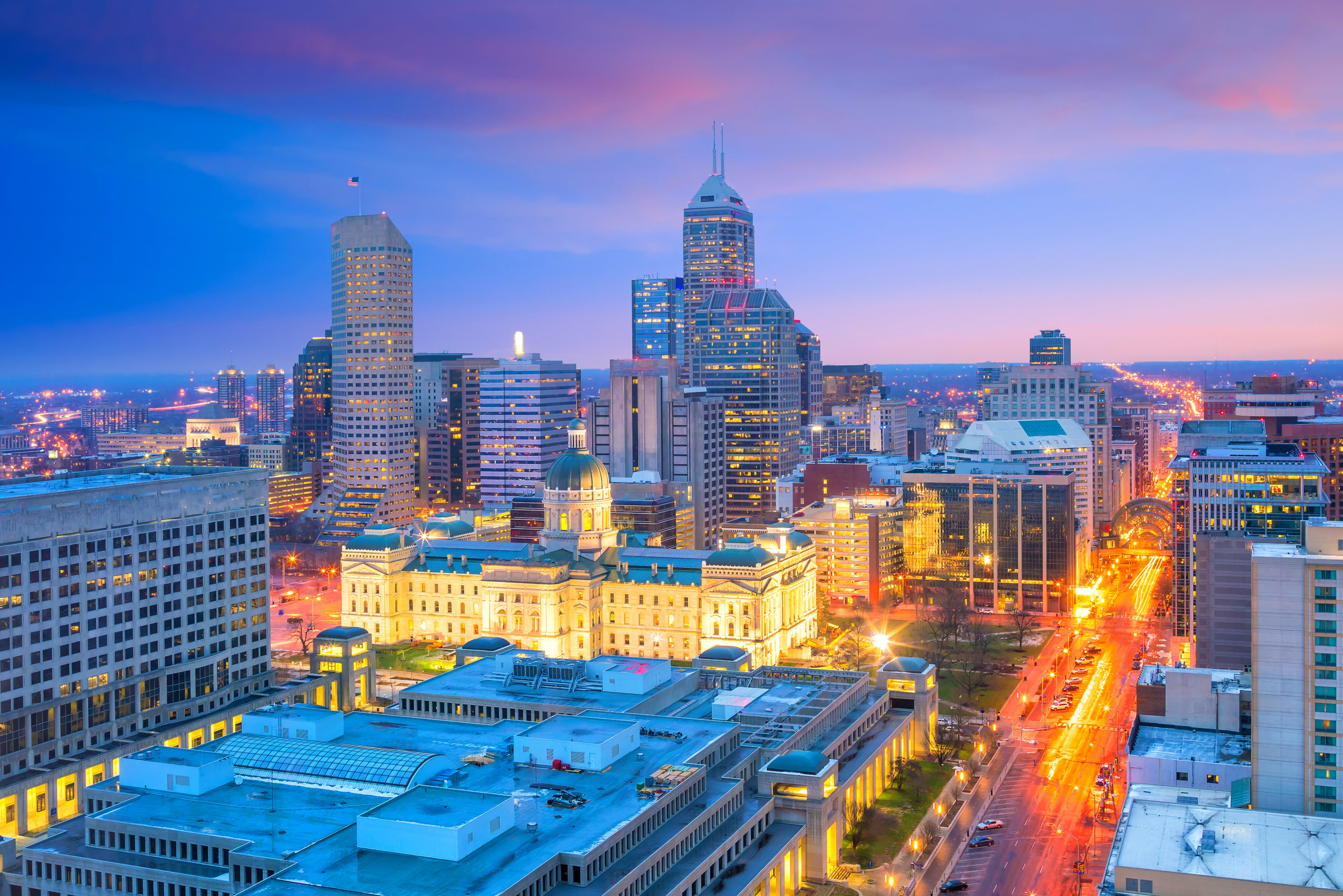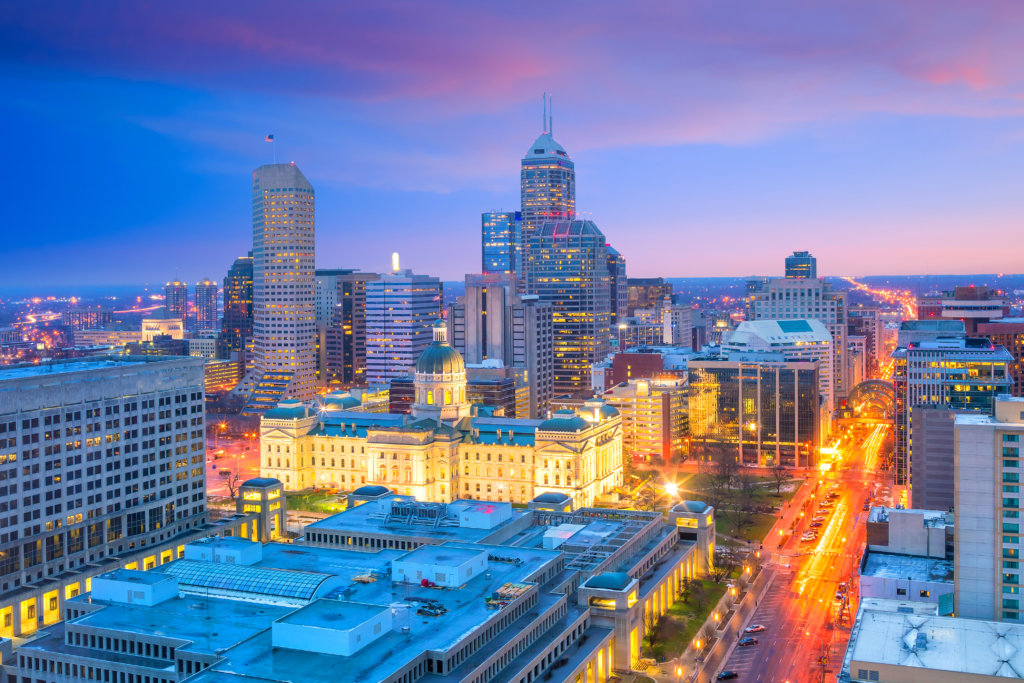Indianapolis is an urban city in Marion County in the USA. The city is known for its cultural attractions, college universities, swanky neighborhoods, recreational centers, and eatery joints. The city is popularly known as ‘Indy’ and is the largest city along the White River.
Why move to Indianapolis is a question that crosses the mind of every individual who has heard of the city and has made plans to relocate here. The city of Indianapolis has something or the other for everyone. Read on to learn more about Indianapolis and its prime attractions.
Is moving to Indianapolis a good idea?
Indianapolis is a big city with classic small-town feels, known for dynamic sports avenues, a low unemployment rate, and sustainable sources of agriculture and food.
Indiana is the world’s third-largest packing city and second-largest railroad in the USA. The city was founded in 1821 for transportation or manufacturing activities. The city is known to host all the major sporting events.
Indianapolis has a mass commute system, a strong economy, and basic amenities with decent infrastructure. These interesting facts about Indianapolis city provide perfect answers to the question, should I move to Indianapolis?
How much do movers cost in Indianapolis?
Relocation from one city to the other induces a lot of stress and is very important to find the right mix of moving partners. The moving companies focus on everything from transportation to the deployment of furniture at the destination.

The movers charge $77/hour to $85/hour to move furniture and other artifacts within the Indiana city. $4509 to $10,821 will be levied for moving furniture outside the city. The moving cost depends on the amount of furniture and relocation distance.
Long-distance companies charge based on varying weights.
[elementor-template id=”13257″]
9 Best Things You Should Know Before Moving to Indianapolis
Indianapolis is a perfect blend of urban and rural dynamics. Things to know before moving to Indianapolis and why move to Indianapolis are the most commonly encountered questions.
Best places to live in Indianapolis families give reasons to make a move to Indianapolis.
There are certain factors or criteria one must Know before shifting to the city. Listed below are some of the prerequisites one needs to consider.
1. Cost of Living in Indianapolis
The cost of living in Indianapolis is lower compared to other cities in the USA.
With affordable housing, good healthcare, decent affordability, and high quality of life, Indianapolis is one of the most desired places to live. The median house price is $191,900.

The area hosts schools, good amenities, and housing options. With the inclusion of taxes and other service charges, one would need to earn around $60,000 annually to sustain a comfortable life in Indianapolis.
Based on calculations without rent, Indianapolis’s living costs are 33.16% less than New York’s. The cost of living is 6.5 percent below the national average.
The average cost to build a 1500 sq ft house is affordable and economical compared to other regions of the US.
What is the monthly cost of living in Indianapolis?
The monthly cost of living for a person is $903.75 without rent, and estimated monthly costs for a four-member family are around $3187.61 without rent.
How much money do you need to live comfortably in Indianapolis?
To live a comfortable life in Indianapolis, one would need to earn $46,016 a year. The median income in this region is about $42,076. However, there is a shortfall of $3940.
2. Indianapolis, IN, Job Market
Indianapolis has had extensive job growth of about 2.5% in recent years. Healthcare, tourism, and sports sectors have the highest contribution to the Indianapolis market.

The unemployment rate in Indianapolis is about 5.6%, compared to the national average of 6.0%.
Future job markets are predicted to rise at rates of 37.5% compared to the national average of 33.5% for the next ten years.
The wages have increased at a constant rate of 1.75% in the last session of 2021.
What is the most common job in Indiana?
The most common jobs in Indiana are registered nurses, salespeople, customer service representatives, marketing managers, truck drivers, and software or application developers.
What is a good salary for Indianapolis?
A good salary in Indianapolis is anything above $42,000, and the average salary in Indianapolis is $49,628. A good wage on an hourly basis is $20.19/hr.
3. Review Tax Rates
All US citizens pay federal taxes on their incomes with credits on foreign taxes. Taxes are imposed by the local authorities at standard rates. Groceries and prescription drugs are exempt from taxes in Indianapolis.

Indianapolis’s minimum combined tax rate for sales, county, and city taxes is around 7%. A flat tax rate of 35% is applicable on taxable income in Indianapolis.
Tax rates in the US fall under the progressive structure and can reach 39.6%. The more the income of an individual, the more are taxes.
The categories for individual filing of taxes are single, married filing jointly, married filing separately, widower, and head of household.
What are income tax rate for Indianapolis in?
Indianapolis’s standard sales tax rate is 7%, and a tax rate of 35% is applicable on taxable income.
How much is Indianapolis sales tax rate?
The local sales tax rate in Indianapolis is 7.0%. There is no additional city, county, or special tax, and the sales tax jurisdiction falls in the Marion area.
[elementor-template id=”13247″]
4. Economic Development Indianapolis
Indianapolis has a decent and diverse economy, ranking 29 in the economic regions of the USA. The region has specialized industries in sports and auto racing.
Indiana is home to the second-largest automobile industry.

Economic development is majorly due to the education, healthcare, and finance sectors. Other industries include insurance, real estate, rental, manufacturing, professional business, and wholesale trade.
The GDP of this metropolitan area is about $134 billion.
Indiana has an unemployment rate of 4.7% compared to the national average of 6.0%.
Indiana has seen significant job growth of 1.9% over these years.
Does Indianapolis have a good economy?
Indianapolis has an economy with a GDP of $359 billion and a per capita income of $44,165. Manufacturing contributes the most to Indiana’s economy.
What are the 3 major industries of Indiana?
The 3 major industries of Indiana are agriculture, mining, manufacturing, and service industries. The automobile industry contributes the most to the export income of Indiana. The rate of growth of the Pharmaceutical industry has been phenomenal in Indiana in recent years.
5. Education opportunities in Indianapolis
Education has an impact on the quality of life and success of an individual. Hence, it is crucial to choose the right schools from the very start. There are some top-rated schools and institutions in the Indianapolis region.

Top schools in the Indianapolis region include Merle Sidener Gifted Academy, Center for Inquiry School 84, and Speedway Senior School. There are around 243 public schools in the Indianapolis region, and the rankings of the schools depend on math and reading proficiency scores.
Indianapolis schools have an average math proficiency score of 33% compared to the national average of 46%. These schools have a reading proficiency score of 37% compared to the national average of 49%.
Does Indianapolis have good schools?
Indianapolis has some of the highest top-ranked schools in the Indianapolis region. Although, most of the schools in Indiana have a ranking of 1/10. Make sure to research and choose the top-ranked school in the city.
How many students are in Indianapolis Public Schools?
There are about 243 public schools in Indianapolis catering to 158,495 students.
6. Medical Care in Indianapolis
The quality of healthcare institutions in the Indianapolis region is determined by the competency of the medical staff, accuracy or timely evaluation of medical reports, and maintenance of modern pieces of equipment.

Indiana University Health Medical Centre is one of the top-ranked medical institutions in the Indianapolis region. It is a well-known hospital and a teaching center. It has a national rank in 2 adults and 9 pediatric specialties.
Some other popular medical centers in this area are Ascension St Vincent Hospital, Community Hospital of Anderson and Madison Country, and Franciscan Health. These medical institutions are not nationally ranked but still offer decent medical care and attention.
There are agencies offering home care services and facilities in Indianapolis. These agencies have an association with the Homecare Association of America.
Does Indianapolis have good healthcare?
Indiana Health University Medical Centre is the only ranked healthcare center in Indianapolis. Medical institutions in Indianapolis need development and improvement in general.
What is the largest hospital in Indianapolis, Indiana?
Indiana Health University Medical Centre is the largest hospital in the Indianapolis region, Indiana.
[elementor-template id=”13252″]
7. Housing and Rents
Moving to Indianapolis, where should I live? What are the options? These are commonly asked questions by individuals looking for properties in and around Indianapolis.

Indianapolis has a lower cost of living and is a city with innumerable attractions. The median price of a home in Indianapolis is around $191,000. It is one of the cities in Indiana with affordable housing accommodation and low rental rates.
The housing market of Indianapolis is very competitive in terms of demand, supply, and sale of properties. For families, the most affordable localities and best places to live in Indianapolis are Bozart Brown, Emerson Heights, and Englewood, with an average rent of $679/month.
The average rent in Indianapolis is about $1020. Rental costs depend on factors like the property’s location, the size of the house, and the quality of the structure.
Are houses expensive in Indianapolis?
The average sale price per square foot in Indianapolis is about $117, 18.2% more than last year. The average selling price of a home is $220K which is 18.8% more than the previous year. As you can see houses in Indianapolis are getting more expensive year by year.
What is the average rent of a 2 bedroom apartment in Indianapolis, IN?
The average rent of a 2 bedroom apartment in Indianapolis comes to around $1409.
8. Transportation in Indianapolis
Transportation in Indianapolis has a network of local or interstate bus services, Amtrak rail services, an Interstate Highway System, two airports, a helipad, and a bike-share system.

Research public transportation options based on budget, location, and choice of preference.
The Indianapolis Public Transportation Corporation or IndyGo operates the bus lines and mass transit system in the city across 31 routes. Options of transportation in Indianapolis include bus lines, electric scooters, and ride-hailing services.
Amtrak Rail services in Indianapolis converge several rail routes and provide efficient transportation across the city.
Uber, taxis, Lyft, shuttle buses, and limo services for private runs or carpool services are included in the ride-hailing services.
Electric scooters are a popular option in Indianapolis. Lime, Bird, and Spin dockless scooters offer various electric scooter services.
Pacers’ bike-share system is in operation across downtown Indianapolis. Annual passes are issued for $125, and ride charges are applicable on a per-ride basis.
Moving to Indiana drivers license, it is easy to procure a driving license in Indianapolis. A list of procedures and documents are asked for, and the process is completed quickly.
Does Indianapolis have public transportation?
Yes, Indianapolis Public Transportation Corporation manages the public transportation in Indianapolis. The corporation was established in 1975 and took over privately owned enterprises.
Does Indianapolis have a subway?
Indianapolis has a subway and is open from 9 am to 9 pm every day.
9. Indianapolis, IN Weather Conditions
The region of Indianapolis has a hot-humid continental climate. The city experiences four seasons. Summers are humid. Winters are cold with moderate snowfall. Spring and autumn experience pleasant weather conditions. It rains during the summer and spring months.

The hottest month in Indianapolis occurs in July, and there are no drought-like conditions here.
It is partly cloudy and relatively dry throughout the year.
The windiest month is April, whereas Indianapolis has the wettest month in May. Most of the rainfall in Indianapolis is a result of thunderstorm activity.
What is the coldest month in Indianapolis?
January is the coldest month in Indianapolis. Coldest temperatures drop below 0 celsius.
Does it snow in Indianapolis?
Winters are cold and snowy in Indianapolis. The region receives moderate snowfall from December to February.
Does Indianapolis get tornadoes?
Indianapolis is highly prone to tornado activities, and the area has recorded the largest tornado outbreak in Indiana.
[elementor-template id=”13242″]
10. Pros and Cons of moving to Indianapolis
There are pros and cons to living in every city. This article covered all the essential aspects of moving to Indianapolis.
The pros of living in Indianapolis include:
- Affordable housing and rental prices.
- Low cost of living.
- Quality of life.
- Desirable attractions.
- Good food services.
Indianapolis has open spaces and parking spaces and is not very crowded. The unemployment rate in Indianapolis is low, and there are job opportunities to look after.
It is easy to socialize and make friendly relations in Indianapolis. The nightlife is lit with many restaurants offering different cuisines at reasonable prices.
Indianapolis is termed as the best hiking in Indiana.
The cons of living in Indianapolis include:
The cons include high crime rates, poor air quality, transportation systems on the borders, dodgy neighborhoods, and increasing homelessness.
The education system and extreme winter conditions also contribute to the cons of moving to Indianapolis.
Conclusion
Indianapolis is a place where one can experience the charm of a big city in a local place. There are pros and cons attached to moving to Indianapolis. Like every other city, make sure to research all the valid points before shifting.
Would you like to shift to Indianapolis or visit the area? Why move to Indiana? What are your views after reading the article?
If you are looking for an affordable and suburban place with a local touch, Indianapolis is the place for you.
Let us know in the comments below.
[elementor-template id=”11713″]
